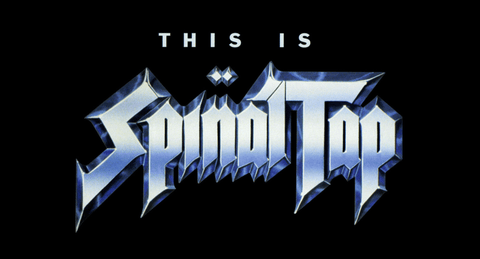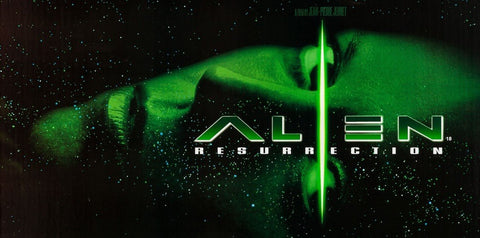
In our blog series “The Film Behind The Poster”, we select a favourite from our Catalogue of guaranteed original vintage movie posters and take a good look at the film that the poster accompanied.
In this, the third in the series, we have chosen one of our stunning French ‘Grande’ posters, for 1951's “The Day The Earth Stood Still”.

In the early years of the 21st Century, the pace of technological advancement shows no signs of slowing. Artificial Intelligence now permeates our everyday lives, be it in visible forms, such as Siri / Alexa or self driving cars, or, hidden ‘self learning’ algorithms that now make invisible decisions on insurance applications and targeted, personalised, advertising.
The rise of A.I. has lead prominent thought leaders, such as the father of the Internet, Sir Tim Berners-Lee and Microsoft co-founder, Bill Gates, to raise concerns. The late Professor Stephen Hawking went as far as to say “… development of full artificial intelligence could spell the end of the human race…”.
Who will ultimately be the master – man, or, machine?
These are not new fears. As far back as Mary Shelley’s Frankenstein, we have explored the dangers of our own creations and the rise of the machine.
The topic was certainly being explored in the 1940s.
The Source Story
Hiram Gilmore Bates II ‘Harry Bates’ was born in Pittsburgh in 1900. He joined the Clayton publishing group and as founding editor of “Astounding Stories of Science Fiction” (later “Astounding Stories”) had a significant influence on the growth of quality science-fiction writing in the early 1930s.
He was also an author and the October 1940 issue of “Astounding” features his superb short story “Farewell to the Master”.
Through the words of photo-journalist Cliff Sutherland, “Farewell to the Master” introduces us to a time and space travelling ship that appears suddenly alongside the Smithsonian Institution in Washington. Within it, we learn, are the humanoid ‘god-like’ alien ‘Klaatu’ and the green, metallic, eight foot robot, ‘Gnut’.
Sutherland tells the story of Klaatu’s untimely murder and of Gnut’s attempts, in a display of loyalty akin to Greyfriars Bobby, to resurrect the assumed Master.
The Film
Robert Wise’s 1951 film, “The Day The Earth Stood Still”, takes “Farewell to the Master” as its base, but takes a few liberties with the story.
Set in the midst of the tension, missiles and nuclear weapons of the Cold War, it stars English actor Michael Rennie as ‘Klaatu’ and Lock Martin as ‘Gnut’ (now renamed ‘Gort’), and, introduces a love interest in the form of Patricia Neal as young widow 'Helen Benson'.
Within the film Klaatu explains the reason for his visit, to warn the technologically advancing Earth of the dangers of its aggression. Other planets have developed a solution that protects them all. Powerful robots, such as Gort, have been created and given authority to deal swiftly with any threats. The repercussions of transgression have led to a common peace. If Earth’s aggression begins to threaten other planets, it will be subject to this summary justice.
The travellers depart, leaving Earth with the option of joining them, or, facing obliteration.
The film was a Golden Globe winner in 1952, for, perhaps with a little over statement, the “Best Film Promoting International Understanding”.

Patricia Neal went on to have an illustrious acting career, winning the 1963 Best Actress Oscar for her role alongside Paul Newman in “Hud”. She married the English author Roald Dahl, living for many years at Great Missenden, now home of the ‘Roald Dahl Museum and Story Centre’. She successfully battled the effects of a debilitating stroke, and, in an astonish feat of recovery, returned to acting. She was again nominated for an Oscar, this time losing 1969’s to Katherine Hepburn and Barbara Streisand, in the only tied Best Actress Oscar.
Robert Wise would also become an Oscar Winner for "West Side Story" (1961) and "The Sound of Music" (1965). He also directed 1979’s “Star Trek: The Motion Picture”.
Between 1931 and 1953, Harry Bates wrote seventeen short stories before becoming disabled by the early effects of arthritis. His hands were badly affected, preventing him from writing. He died in 1981.
Returning to the opening of this blog post and the threat of the machine…
“The Day The Earth Stood Still”, makes it clear that Gort, and other giant robots, were created for a purpose. Whilst given authority over any aggression, they serve and act on behalf of their creators.
In “Farewell to the Master”, Bates leaves his most thought provoking sentence to the final line, spoken to Sutherland who has become confused by Klaatu and Gnut’s relationship…
“You misunderstand,” the mighty robot had said. “I am the master.”
Only the future will tell us whether Bates’ book, or Robert Wise’s film, is the more prophetic.
And so to the poster…
The Poster
We are great fans of the French ‘Grande’ format and this poster shows why. The stunning artwork is unique to this French release of the film, and, in contrast to the black and white film it depicts, uses a vibrant palette to bring to life the mighty Gort and the terror of naïve earthlings!
From the “ATELIERS LALANDE 91-WISSOUS TEL. 920.98.75 76” text at the bottom right of the poster, it is most likely from a 1967 - 1968 French release of the film and is in stunning condition, especially given its age.
Folded, as issued, we have not yet linen-backed the poster, but we would advise that linen-backing be carried out prior to framing. This poster is too special. It needs conserving.
We do hope you've enjoyed this look at the film behind the poster. For more stunning posters such as this, please take a look at our Catalogue of guaranteed original vintage movie posters.
We hope you find something you love.
Adam and the Art of the Movies team.





